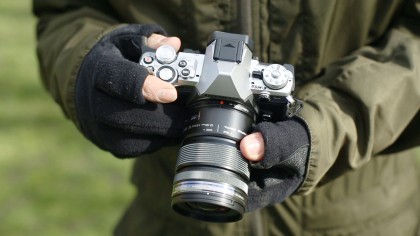Why you can trust TechRadar
Thanks to their small size, solid build and high-end features Olympus's OM-D series of cameras have found favour amongst a growing band of enthusiast and professional photographers. One of the challenges for manufacturers that feature-rich cameras bring is how to update them. Olympus, however, has managed to produce a camera that is enticing to existing E-M5 users as well as newcomers to the OM-D series.

While the manufacturer has stuck with the same sensor as the original E-M5 for the Mark II version, adding the ability to shoot 40Mp and 64Mp files elevates it significantly for some users. The results are very impressive and the level of detail is on a par with that from the Nikon D810 at the lower sensitivity settings.
At the moment the circumstances in which this system can be used are rather limiting as neither the camera nor the lens can move. However, it seems likely that this will be refined in the future. The question is whether Olympus is able to achieve this with the E-M5 Mark II's processor or whether a more powerful engine is required.
Another significant improvement over the original OM-D E-M5 is the switch from a tilting screen to a vari-angle unit that is useful when shooting landscape or portrait format images from a range of angles.
Videographers will also appreciate the improvements that have been made with the Mark II's video system including the ability to shoot at a range of frame rates (60p, 50p, 30p, 25p and 24p), bitrates up to 77 Mbps, clean HDMI output, audio control and compatibility with the image stabilisation system.
We like
Despite its limitations, the E-M5 Mark II's High Res mode is a great addition that means you can produce high quality prints that are almost 3 feet across. However, because they are generated from a 16Mp sensor you don't have to fill-up your memory card or computer hard drive with huge files when you don't need them. What's more, the different image sizes are generated without the change to the framing that comes with cropping.

Although it takes a while to get to know the E-M5 Mark II's feature-set and control arrangement, it's highly customisable, so once you're familiar with the features you can set-up the camera to suit your own shooting style.
The ability to shoot 'clean' raw files when using the Art Filter effects is also handy. The Art Filters apply a style to JPEGs and it can be useful to show these to subjects or clients during a shoot even though you plan on editing the raw files to get exactly the result that you want. Some of the results when using the Art Filters are very good and it's nice to be able to connect the camera to a smartphone via its Wi-Fi system to share images when you're out on a shoot.
I'm a fan of vari-angle screens because they make it much it easier to compose and shoot images at awkward angles. If I'm out for a day's shooting, I dress appropriately and I'm not adverse to kneeling or lying on the ground to get the shot I want. However, the E-M5 Mark II is small and light enough to be a 'take-everywhere' camera and there are times when I may see a great low-level shot, but I don't want to kneel on the ground. The vari-angle makes the shot possible.
We dislike
The E-M5 Mark II's menu system is extensive and it can take a while to discover important controls and become familiar with the layout. The interface would benefit from a bit of a rethink to group more of the connected features or controls together.

I'd also like to see the speed of the High Res mode increased to make it more feasible to use it outside for landscapes when elements within the scene may move a little.
While Olympus is to be applauded for producing such a small, robust feeling camera with a huge array of controls and features, some photographers may find it a little fiddly to use.
Verdict
The Olympus OM-D E-M5 Mark II is a very capable camera that offers extensive and versatile control. However, its complexity should not be underestimated. There are automated options that are designed for use by less experienced photographers, but it's better suited for use by enthusiasts or professional photographers. Even these users are likely to experience a few frustrations in the early days while they get to know the camera.
Although there are quite a few restrictions that come with the High Res mode it generates impressive images that contain far more detail than the standard 16Mp files.
